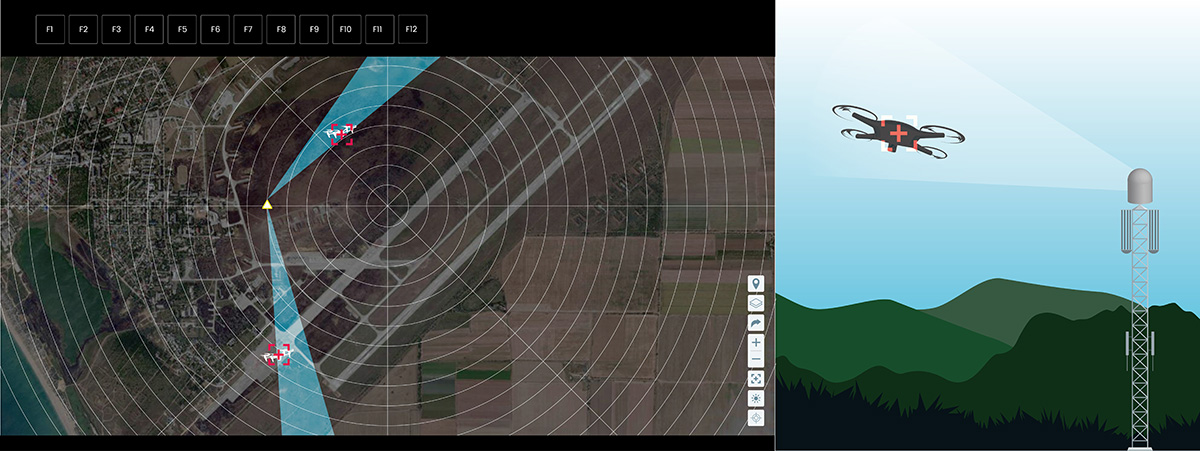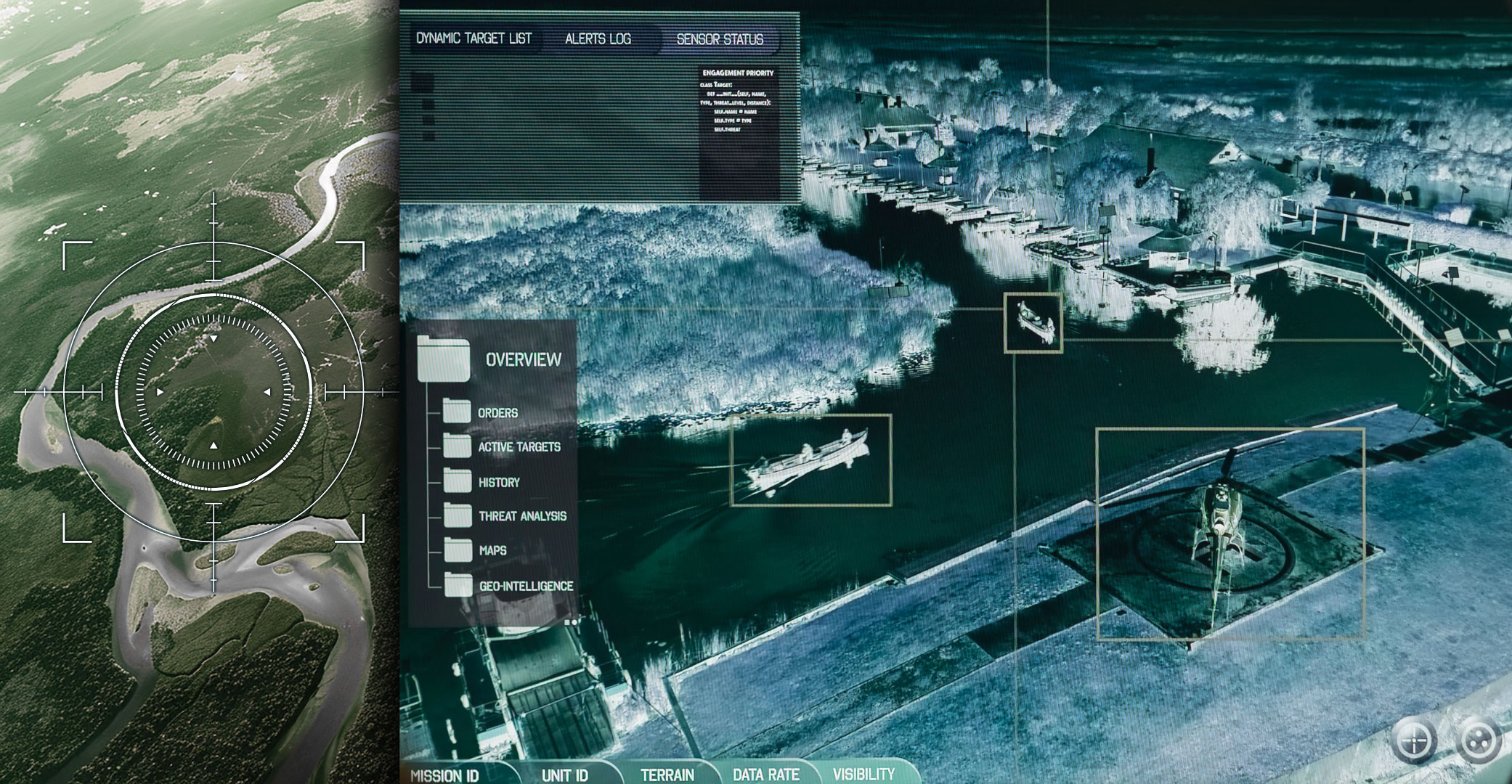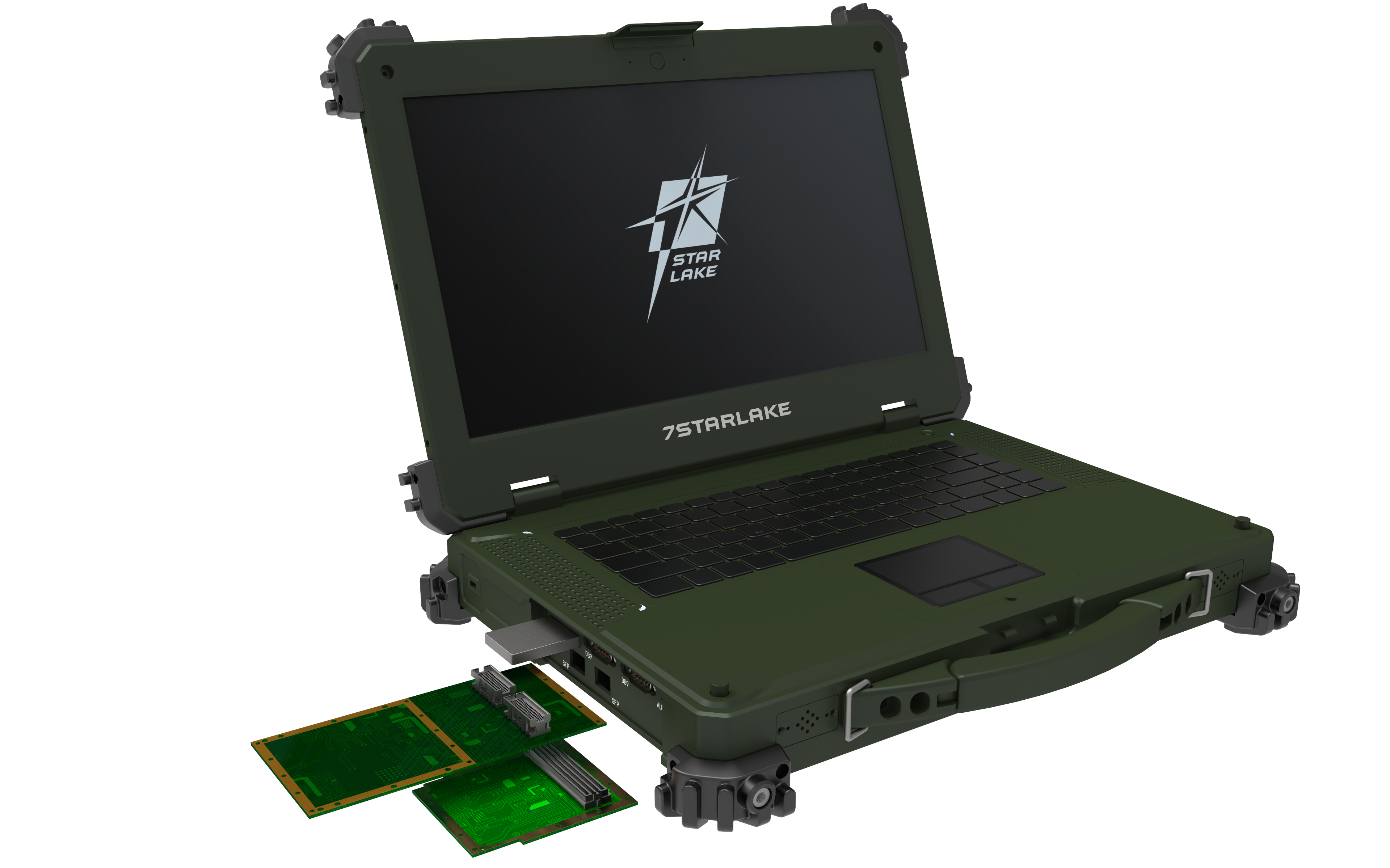- Introduction
-
The proliferation of commercial and military-grade drones presents a growing threat to critical infrastructure, military installations, and sensitive areas. As drone technology advances in autonomy, maneuverability, and payload capabilities, traditional air defense systems struggle to detect, track, and neutralize these small and agile threats.
This article outlines a modular and effective Anti-Drone System that leverages four key components: Electro-Optical/Infrared (EO/IR) sensors, GPU-based AI computing, rugged military-grade displays, and a Command & Control (C2) system integrated with fire control. Together, these components enable real-time detection, classification, tracking, and neutralization of drone threats.
- System Structure Overview
-
The Anti-drone System functions in a seamless data flow architecture across the following four devices:
- EO/IR Sensor Unit
- GPU Computer (AI Processor)
- Military Display Terminal
- Command & Control (C2) with Fire Control Integration
This system defines the architecture and operational flow of a modern C-UAV system, highlighting a four-step process: Threat Assessment, Situational Awareness, Extended Detection, and Counter-Measures. Each step integrates advanced technologies and sensor fusion to ensure a robust and responsive defense against unauthorized drone activity.
1. Threat Assessment: RF-Based Detection and Analytics
The first line of defense in any Counter-UAV system is early threat detection. This stage relies heavily on Radio Frequency (RF) sensors which scan the electromagnetic spectrum for signals associated with UAV activity.

RF Spectrum Monitoring
RF sensors continuously monitor for command and control (C2) links, video downlinks, or telemetry signals commonly used by commercial and DIY drones.
Object Classification
Using machine learning algorithms, the system analyzes the RF signature to differentiate drones from other radio-emitting devices.
Threat Profiling
Detected UAVs are profiled based on signal type, frequency, duration, and movement pattern to assess the threat level. 2. Situational Awareness: Localization and Tracking
Once a potential UAV threat is identified, the next step is establishing situational awareness through localization and tracking.
Multi-Sensor Fusion RF data is combined with radar and acoustic sensors to accurately triangulate the drone’s position. Real-Time Tracking The system continuously updates the drone’s trajectory, speed, altitude, and heading Geo-fencing Alerts Integration with pre-defined no-fly zones triggers alerts and activates the next level of response protocols. 3. Extended Detection: Electro-Optical/Infrared (EO/ IR) Verification
Visual confirmation is essential to avoid false positives. Electro-Optical (EO) and Infrared (IR) cameras provide this critical optical verification.
Target Identification EO/IR systems use real-time visual and thermal imaging to identify and track UAVs by locking onto their signatures. High-performance GPU servers, equipped with multi-core Intel® Xeon processors and NVIDIA GPUs, process vast EO/IR data streams simultaneously, with CPUs handling scheduling and preprocessing while GPUs accelerate convolutional neural network (CNN) inference models for rapid UAV identification. This parallel computing approach is essential for scenarios involving multiple UAVs or high-frame-rate video feeds from multi-sensor arrays. Day/Night Capability IR imaging processes low-signal thermal data, particularly in nighttime or obscured environments, requiring advanced computational techniques for clarity. Multi-core Xeon CPUs and NVIDIA HIGH CUDA CORE GPUs enhance thermal imaging by reducing noise, improving contrast, and recognizing thermal patterns, with GPUs supporting deep learning models for fine-grained detection. Meanwhile, Xeon processors handle real-time sensor fusion, integrating IR and visible light data to maintain situational awareness under varying lighting conditions. Automated Image Analysis EO/IR systems generate vast amounts of imagery, which AI-driven recognition and threat detection algorithms analyze in real time. HIGH CUDA CORE GPUs accelerate high-resolution frame processing, 3D object detection, and segmentation models, while Xeon CPUs manage orchestration, load balancing, and storage for large datasets, including radar inputs. This combination enables rapid and precise classification of UAVs, distinguishing threats from benign objects and delivering actionable intelligence to operators or automated counter-UAV systems. 4. Counter-Measures: Soft and Hard Kill Options
Once a threat is confirmed, the system initiates counter-measures to neutralize the UAV. These are broadly classified into soft kill and hard kill strategies.
Soft Kill Methods
RF Jamming Disrupts the C2 link between the drone and its operator, causing the drone to lose communication or return to base. GNSS Spoofing Sends false GPS signals to misguide the UAV's navigation system. Protocol Manipulation Exploits firmware vulnerabilities in commercial drones to gain control or disable them. Hard Kill Methods
Kinetic Solutions This includes anti-drone guns, shotguns, or even trained birds of prey to physically disable the UAV. Directed Energy Weapons (DEWs) High-energy lasers or microwave weapons can disable drone electronics without collateral damage. Net Guns & Drone-on-Drone Interception Specialized interceptor drones equipped with nets capture and neutralize hostile UAVs. 
- Step-by-Step Operational Workflow
-
Step 1: Drone Detection via EO/IR and Sensor Fusion
The counter-drone system excels through sensor fusion, a critical technology for intelligence operations in challenging environments. This integration enhances motion detection, supports tactical missions, and strengthens real-time intelligence gathering.
- The EO/IR sensor scans the sky for anomalies, identifying potential drones based on thermal signatures (IR) and optical recognition (EO).
- Simultaneously, data from other sensors (e.g., radar, RF detectors) is fused to enhance target validation and eliminate false positives.
- The fused data is passed to the GPU Computer for AI-based processing
1. Data Acquisition
Armed with cameras and advanced sensors, UAVs excel in collecting mission-critical intelligence. From capturing detailed images of buildings to reading car plates, the fusion of sensor data empowers UAVs with the capability to gather precise information. When coupled with AI technology, UAVs can perform real-time object detection, further elevating their capabilities in data acquisition.
2. Data Link
Addressing the diverse communication requirements of UAVs, the integration of Software-Defined Radio (SDR) technology becomes paramount. SDR enables adaptability to different frequency bands and communication standards, establishing an agile and reliable Data Link between the UAV and the control station. This seamless communication is fundamental for successful UAV missions.
3. Data Transmission
The optimization of UAV roles relies on the efficient transmission of valuable frontline data back to the control station in real-time. This ensures a live visual feed, enhancing decision-making and responsiveness, especially in critical applications like surveillance and reconnaissance. Data transmission completes the loop, allowing operators to act swiftly based on the information gathered by the UAV.
Step 2: AI-Based Tracking and Localization Using GPU Computing
The GPU Computer , running advanced AI algorithms such as Convolutional Neural Networks (CNNs) and object tracking models, processes incoming data to:
- Classify whether the object is a drone.
- Track its movement in real time, even under cluttered or obscured conditions.
- Locate its precise coordinates (geo-location) and predict trajectory.
The GPU Computer is linked to the Command & Control system (C2) and transmits real-time data for threat evaluation and fire control decision-making.
Step 3: Visual Confirmation and Engagement on Military Display
All processed data, including video feeds and target telemetry, is transmitted to the military-grade display. Upon threat confirmation, the C2 system with fire control initiates the engagement sequence, deploying countermeasures such as jamming, lasers, or kinetic interceptors. The ruggedized display presents:
- Visual tracking of the drone on map and live feed.
- Status indicators for tracking confidence, threat level, and system readiness.
- User interface for the commander to confirm and authorize neutralization.
The next-generation rugged UAV Targeting Displays enhance precision and battlefield durability.
7STARLAKE's SKY15-P20 is a rugged, mission-critical tactical display featuring an LCD with super brightness up to 1000 nits, optical bonding of protective glass (GFG) screens, a touchscreen with EMI filtering and EMI mesh shielding, and anti-reflection/anti-glare (AR/AG) coatings. It possesses a built-in MCU and 20 programmable function keys. Designed with IP65-rated waterproof and dustproof all-aluminum housing, the rugged touch display supports an extended operating temperature range from -30°C to 60°C and a flexible DC power input range from 18V to 36V.
- Key Components Description
-
EO/IR Sensor
- High-resolution visual and thermal imaging.
- Pan-Tilt-Zoom (PTZ) capability for wide-area coverage.
- Operates in day/night and all-weather conditions.
GPU Computer
- Advanced counter-drone visualization platform
- Integrates multi-source sensor fusion, AI-driven analytics, and high-performance computing.
- AI-enhanced object recognition and 3D rendering Large capacity storage
Military Display & Laptop
- Ruggedized touch-screen interface.
- Sunlight readable 1000 Nits
Command & Control with Fire Control
- Central processing unit managing all system modules.
- Decision support for threat level, engagement rules, and weapon activation.
- Interface to integrate with kinetic or non-kinetic effectors.
- Conclusion
-
Integrated Anti-Drone Systems provide a robust solution to modern aerial threats by combining smart sensors, AI processing, intuitive visualization, and rapid engagement capabilities. The modularity allows for scalable deployment and integration into existing security ecosystems.
7STARLAKE’s integrated Anti-Drone System addresses these evolving challenges through a cutting-edge combination of EO/IR sensors, AI-powered GPU processing, and C2-ready rugged military-grade interfaces. Its modular and scalable design ensures adaptability across both fixed and mobile deployments, enabling seamless integration with existing defense systems. Whether deployed at a remote military base, mounted on an armored vehicle, or installed to protect critical infrastructure, the system delivers enhanced situational awareness and decisive response capabilities. By bridging advanced technology with operational readiness, 7STARLAKE provides a future-proof defense solution for securing high-risk airspace in modern and asymmetric warfare environments.
Download Whitepaper [Here]
